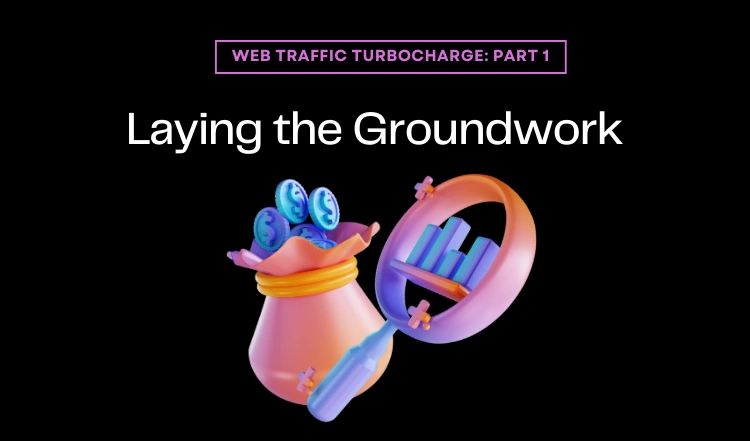Any marketer who has tried driving from Instagram will know just how much of a struggle it can be. When you’re trying to drive traffic from a social media platform (or any platform for that matter), you’ll need to include your links in your content.
This is easy to do with Pinterest, where you can link the image to your blog post. With YouTube, you can add a link in your description… and with Facebook groups, you can add links in your posts.
With Instagram, however, it’s almost as if any external link is not only shunned, but despised. After all, you can include ONLY one link in your bio. That’s tough if you wish to link to multiple blog posts, etc.
In this article, we’ll look at how you can get around the obstacles on Instagram and use it to drive traffic to your niche.
How is your competition doing?
It’s important to understand the type of audience that uses Instagram. It’s a much more ‘hip’ group of people than what you’d find on Pinterest or Facebook.
The Instagram crowd is all about lifestyle pics, flash and vanity. The audience finger scrolls through their feed faster than a one-armed wallpaper hanger.
So, grabbing their attention is a Herculean task. Before even attempting to drive traffic to your niche, check if there are others with Instagram profiles (in your niche) that are doing well.
If there are, that’s a good sign. You can find out how well a profile is doing by hovering over the images and seeing the number of likes an image gets.
While Instagram is gradually removing this metric, you can still look at the number of comments to get an idea of the level of engagement.
You’ll notice that niches such as fitness, fashion, self-help, etc. are red-hot on Instagram, but there’s lots of competition too. That’s not necessarily a bad thing, but it’s something you should be aware of.
Basic Instagram pointers
You’re allowed up to five Instagram profiles per mobile phone. The platform can actually detect if you’re posting from your phone or using an app such as Tailwind, which has a generous free plan to get you started.
It prefers manual uploads rather than scheduled ones that use apps, even if it doesn’t mention it openly.
You may also wish to read their terms here: https://help.instagram.com/
When you open an Instagram profile, it’s best to start liking profiles that are closely related to your niche.
This will give Instagram an idea of what you like, and it will show you more of such content in your suggested feed (when you click on the magnifying glass icon). This will be very helpful for your content creation later.
Building your list
You can ONLY add links to 3 spots on Instagram:
- Your bio
- In your Instagram stories
- In your IGTV video descriptions
Ideally, some of the links you add should be to your landing, where you can build a list of subscribers that you can market to later.
For the link in your bio, you should use a tool such as Linktree or Smart.bio by Tailwind.
These tools will create a page where you can add multiple links for visitors to click on. Try not to have more than 5 links. Less is more here.
If you don’t wish to use either of these tools, you can create a bridge page with buttons by using a flexible page builder such as Thrive Architect, OptimizePress or Akzis.shop. Make certain that the page is mobile responsive and looks good on mobile.
This will achieve the same objective without any extra tools. Do note that Instagram was designed primarily for mobile phone users, and most people who use Instagram do so from their mobile phones.
So, your website MUST be mobile friendly too, so it all looks good. Or you’ll risk losing visitors.
Getting traffic and clicks
The first rule to getting engagement on Instagram is to have exclusive content that’s attention-grabbing. Optimize your Instagram image by following the 1:1 size ratio. This means a 1080x1080px or 612x612px.
When starting out with Instagram, you’ll want to post 3-4 times a day. This will quickly fill up your profile with content, and people who just start following you will notice your presence more readily.
Keep your branding colors consistent, and your content must be unique enough to stand out and perk people’s curiosity.
Use Instagram stories and post videos. Ideally, you should appear in the videos too. This will increase engagement massively.
Instagram users love watching videos (just like the TikTok crowd). Stories will also give you an opportunity to add links to your website.
The more videos and content you put out, the faster you’ll gain traction.
Another crucial point to remember is to have a call-to-action (CTA). Whenever you make a post, regardless of if it’s on your profile or in a story, always ask your viewers to click on the link in the bio/description.
Ensure that you have a call to action in your bio too. Having a link alone is not enough. Tell them to click on it and offer a lead magnet or some bonus to motivate them to follow through with the click.
Getting followers on Instagram can be tough. It WILL take a while to get traction. The best way to do this will be to have links pointing to your Instagram profile from other web properties.
For example, telling your subscribers/customers/visitors on your YouTube channel/blog/email list, etc. to follow you on Instagram. This will give the initial infusion of followers to your account and lend it some credibility.
Next up, you’ll want to find popular profiles in your niche and follow people who comment on those profiles. The idea is that if they’re interested in that page, they’ll be interested in yours too.
When you follow them, they’ll get a notification alert. If you’ve named your profile with a keyword or two describing your niche, they’ll be much more likely to follow you back.
Alternatively, you may wish to direct message them and ask them to follow you if they’re interested in similar content.
Aim to follow 10 people daily. Don’t overdo it. You don’t want the algorithm to flag your account. While not all the people you follow will follow you back, a percentage of them will.
Keep a spreadsheet, so you can record who follows you in return. It’ll then be easier to unfollow those who don’t respond in like fashion.
Once you build a decent-sized list of followers, you may wish to contact the owner of another page with a similar sized following and ask if they’d be willing to do a shoutout for you. In return, you’ll do one for them.
This mutual arrangement can be beneficial to both parties. Check their profile in Social Blade first, just to make sure the page’s growth is organic. If you see spikes in the analytics, they may be buying likes or using other dodgy methods. It’s best you steer clear of them.
Improving engagement
Whatever you do, do NOT try hard selling an Instagram audience. This is a group that finds it repelling when faced with salesy subterfuges.
Instead, provide entertainment with a hint in the description – for them to click on the link in your bio. The selling should seem like a byline or an afterthought.
For example, a video of you suddenly jumping around your room looking all active and energetic with a mention that you just drank a certain energy drink will be amusing… but it’ll also make viewers wonder what you drank.
Telling them to click the link in the bio to see what drink is making you ‘crazy’ will perk their curiosity enough to get the click. That’s how you do it.
If you find yourself struggling for content ideas, just look at what your competition is posting. Copy their post and give them credit in your description. Of course, you’ll want to share the posts that get the most likes and engagement.
This is a popular practice, and most Instagrammers are fine with it if there’s credit given. If you’re unsure, you can always send the account owner a private message and ask if they’d be ok with you sharing their content.
Remember to track the links in your bridge page (link in bio) with a tool like ClickMagick. This will let you know which links are getting traffic and which are not.
Use hashtags wisely. Every post should have relevant hashtags… but don’t use the same tags repeatedly. Aim for a variety of niche-related hashtags. Once again, don’t overdo it.
In conclusion…
Instagram is one of the tougher social media platforms to leverage for traffic. If your niche is a good fit for YouTube or Facebook or Pinterest, it’d be a good idea to focus on those platforms first.
Once you’re doing well with those, then you can give Instagram a try. It works, and you can get traffic, but it’ll take time and effort.
Ultimately, you must do what it’s best for your business, and that means to focus on the traffic source closest to your buyer or customer demographic. If that’s Instagram, you now have the knowledge you need to get started and succeed.





